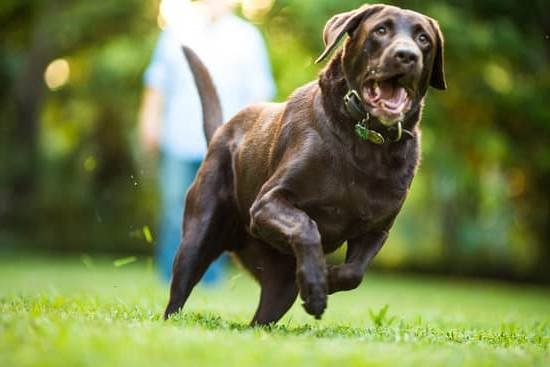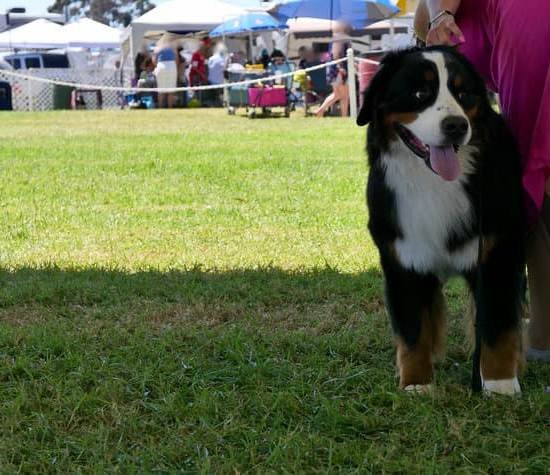High prey drive dogs are known for their intense instinct to chase and capture prey. In this article, we will discuss how to train a high prey drive dog, understanding the nature of their prey drive, and the challenges that come with it. We will also explore the importance of early socialization and obedience training, as well as techniques for managing and redirecting their natural instincts.
Understanding the Prey Drive in dogs is crucial in order to effectively train them. It is essential to recognize how this instinct manifests in their behavior, as well as the common issues and pitfalls that come with training a dog with a high prey drive. Early socialization and obedience training play a key role in shaping their behavior, and we will delve into the significance of these aspects when dealing with high prey drive dogs.
Furthermore, we will also discuss techniques and strategies for redirecting the prey drive, as well as incorporating enrichment and mental stimulation into their training regimen. Positive reinforcement will be emphasized as a pivotal component in motivating and rewarding high prey drive dogs during training exercises. Lastly, we will touch on seeking professional help when necessary.
The Challenges of Training a Dog With High Prey Drive
High prey drive in dogs can be both a blessing and a challenge for pet owners. While this instinctual behavior is a reflection of their natural hunting ability, it can create difficulties when it comes to training and obedience. Understanding the challenges of training a dog with high prey drive is crucial for effectively managing their behavior and ensuring a harmonious relationship between you and your canine companion.
One common issue that arises when training high prey drive dogs is their tendency to become easily distracted by wildlife, other animals, or even moving objects. This can make it difficult to keep their attention focused on you during training sessions or while out for walks. Additionally, high prey drive dogs may exhibit impulsive behavior such as chasing and pouncing, which can pose safety risks for both the dog and those around them.
Another challenge is the potential for developing leash reactivity. High prey drive dogs may lunge, bark, or pull on the leash when they catch sight of something triggering their hunting instincts. This behavior can be intimidating and challenging to control, especially in busy public settings. It’s important to address these issues early on to prevent them from escalating and becoming ingrained habits.
Furthermore, high prey drive dogs may struggle with impulse control, particularly when faced with exciting stimuli. This can manifest in disobedience, difficulty focusing, and heightened arousal levels. To effectively train a dog with high prey drive, it’s essential to implement strategies that address these common issues and pitfalls head-on while maintaining patience and consistency.
| Common Issues | Potential Solutions |
|---|---|
| Distracted by wildlife or moving objects | Use high-value treats for redirection; work on focus exercises |
| Leash reactivity | Implement controlled exposure techniques; use positive reinforcement for calm behavior on leash |
| Impulse control | Incorporate impulse control training exercises into daily routines; gradually increase distractions in training environments |
The Importance of Early Socialization and Obedience Training for High Prey Drive Dogs
High prey drive dogs have a natural instinct to chase and hunt, which can make training challenging. However, early socialization and obedience training are crucial for managing and channeling this instinct effectively. Here are some key points to consider when it comes to the importance of early socialization and obedience training for high prey drive dogs:
- Socialization: Early socialization is essential for high prey drive dogs to learn appropriate behavioral responses towards other animals, people, and new environments. Exposing them to different experiences in a positive and controlled manner can help reduce their reactivity and aggression towards potential triggers.
- Obedience Training: Obedience training is vital for establishing clear boundaries and commands with high prey drive dogs. Teaching them basic commands such as “sit,” “stay,” and “come” can help you gain control over their impulses when they are triggered by prey-related stimuli.
- Desensitization: Exposing high prey drive dogs to controlled situations that trigger their instincts, such as the sight or scent of small animals, can help desensitize them over time. Gradual exposure combined with positive reinforcement can teach them to remain calm and focused in the presence of potential prey.
By incorporating early socialization and obedience training into your high prey drive dog’s routine, you can help build a strong foundation for managing their instincts effectively.
Training a high prey drive dog requires patience, consistency, and understanding of their unique needs. By focusing on early socialization and obedience training, you can set the stage for successful management of their natural instincts while also strengthening your bond with your canine companion.
Redirecting the Prey Drive
High prey drive in dogs can manifest in behaviors such as chasing, running, and even sometimes nipping or biting. It is essential to understand that this instinct is natural for dogs and has been a part of their genetic makeup for centuries. Redirecting the prey drive involves managing and channeling this instinct in a way that is safe and appropriate for both the dog and their environment.
Here are some techniques and strategies for managing and redirecting the prey drive in high prey drive dogs:
- Provide alternative outlets: Engage your dog in activities that simulate hunting behavior, such as playing with interactive toys like flirt poles or engaging in scent work activities. This provides an appropriate outlet for their natural instincts.
- Use positive reinforcement: When your dog shows restraint or listens to commands in the presence of triggers that stimulate their prey drive, reward them with praise, treats, or playtime. This helps to reinforce desirable behaviors while redirecting their focus.
- Controlled exposure: Gradually expose your dog to controlled environments where they are likely to encounter triggers for their prey drive. Use a leash and harness to maintain control while allowing them to experience these stimuli at a safe distance.
Training high prey drive dogs requires patience, consistency, and understanding of their natural instincts. By employing these techniques and strategies, you can help manage and redirect their prey drive in a way that is safe and constructive for both the dog and their human companions.
Remember that every dog is an individual, so it may be beneficial to seek guidance from a professional dog trainer or behaviorist who has experience working with high prey drive dogs if you need additional support.
Incorporating Enrichment and Mental Stimulation Into Training
High prey drive dogs are known for their intense instinct to pursue and capture prey. This behavior can manifest in various ways, including chasing small animals, birds, or even running after cars. Training a high prey drive dog can be challenging, but with the right techniques and strategies, it is possible to manage and channel this instinct effectively.
Incorporating enrichment and mental stimulation into the training routine is crucial for keeping high prey drive dogs engaged. These dogs thrive on mental challenges and physical activities that mimic hunting behaviors. Providing them with interactive toys, puzzle feeders, and scent games can help fulfill their natural instincts in a controlled environment. Engaging in activities like nose work or agility training can also provide mental stimulation while allowing the dog to expend their energy in a positive way.
One effective method for incorporating enrichment and mental stimulation into training is through the use of “food puzzles” or interactive feeders. These specialized toys require the dog to work for their food by using problem-solving skills to access the kibble inside. By making mealtime an enriching activity, high prey drive dogs can satisfy their natural desire to hunt and forage while also promoting mental exercise.
In addition to physical exercise, high prey drive dogs benefit from consistent training that focuses on impulse control and obedience. Teaching commands such as “leave it” and “stay” can help redirect their urge to chase or capture prey in certain situations. It’s important to provide plenty of positive reinforcement during training sessions to encourage desired behaviors. Understanding how to train a high prey drive dog requires patience, consistency, and a deep understanding of their instincts.
The Role of Positive Reinforcement in Training High Prey Drive Dogs
Positive reinforcement is an essential aspect of training high prey drive dogs. It involves using rewards and motivation to encourage desirable behaviors and discourage unwanted ones. When dealing with a dog that has a strong prey drive, positive reinforcement can be especially effective in redirecting their instincts towards more appropriate activities.
The Benefits of Positive Reinforcement
Using positive reinforcement allows you to focus on rewarding your dog for displaying behaviors that are compatible with their prey drive, such as following commands, staying focused, and demonstrating self-control. By doing so, you can build a stronger bond with your dog while also teaching them valuable skills that can help manage their predatory instincts in different situations.
Applying Positive Reinforcement Techniques
One way to incorporate positive reinforcement into training is by using treats or toys as rewards for good behavior. When your high prey drive dog displays the desired behavior, such as ignoring a squirrel or maintaining focus during a walk, promptly reward them with their favorite treat or toy. This will help reinforce the behavior and increase the likelihood of them repeating it in the future.
It’s important to note that timing is crucial when using positive reinforcement. The reward should be given immediately after the desired behavior occurs to ensure that your dog associates it with the specific action you want to encourage.
Consistency in applying positive reinforcement techniques is also key to effectively train high prey drive dogs and channel their instincts towards more constructive activities. Therefore, understanding how to train a high prey drive dog using positive reinforcement is essential for shaping their behavior in a positive direction.
Training Exercises for High Prey Drive Dogs
Recall Training
Recall training is essential for high prey drive dogs as it teaches them to come back to you on command, even when they are distracted by a potential prey. Start training in a calm and controlled environment with minimal distractions before gradually increasing the level of difficulty.
Use a long line to prevent your dog from running off and reward them with a high-value treat or toy when they come back to you. Consistency and patience are key when teaching recall to high prey drive dogs.
Focus Training
High prey drive dogs can easily become fixated on a target, making it crucial to train them to focus on you instead. Use positive reinforcement techniques such as clicker training and treats to encourage your dog to make eye contact with you. Gradually increase the duration of their focus before introducing distractions. Practice focus training in various environments to reinforce the behavior under different circumstances.
Impulse Control Exercises
Teaching high prey drive dogs impulse control helps them resist the urge to chase after prey or act on their instincts without permission. Start by teaching your dog the “wait” or “leave it” command using treats or toys as temptations. Gradually increase the level of difficulty by incorporating real-life scenarios such as squirrels or birds during walks. Consistently reinforcing impulse control through regular training sessions will help your dog manage their instincts more effectively.
By consistently practicing recall, focus, and impulse control exercises, owners can better manage their high prey drive dogs in various situations, ensuring both the safety of their pet and those around them. Remember that patience, consistency, and positive reinforcement are crucial components of successful training for high prey drive dogs.
Seeking Professional Help
In conclusion, training a high prey drive dog can be challenging, but with the right approach and techniques, it is definitely manageable. Understanding the nature of the prey drive and recognizing its manifestations in dogs is crucial for effective training. Early socialization and obedience training play a key role in shaping a high prey drive dog’s behavior, while also helping to prevent potential issues from arising.
Redirecting the prey drive through management and channeling techniques, as well as incorporating enrichment activities and mental stimulation, can help keep high prey drive dogs engaged and fulfilled. Positive reinforcement is essential in training these dogs, using rewards and motivation to encourage desired behaviors. Training exercises focused on recall, focus, and impulse control are also valuable tools for managing their instincts.
It’s important to recognize when professional help may be necessary. Working with a professional dog trainer or behaviorist can provide additional support and guidance for addressing any specific challenges or behaviors that may arise with a high prey drive dog. By following these strategies and seeking help when needed, owners can successfully train their high prey drive dogs to be well-behaved and happy companions.
Frequently Asked Questions
Can Prey Drive Be Trained Out of a Dog?
Prey drive in a dog can be managed and modified through training, but it cannot be completely trained out of a dog. By using positive reinforcement techniques and redirection, owners can teach their dogs to control their prey drive in certain situations.
How Do You Exercise a Dog With a High Prey Drive?
For a dog with a high prey drive, exercising them can be a bit more challenging. Instead of typical walks, consider activities that engage their natural instincts, such as playing fetch or letting them run in a safely enclosed area. Mental stimulation through puzzle toys can also help satisfy their prey drive.
How Do You Train a High Prey Drive?
Training a high prey drive requires consistency and patience. It’s important to start with basic obedience training to establish a strong foundation. Using positive reinforcement methods like treats or toys can help redirect their prey drive towards more appropriate behavior. Enlisting the help of a professional trainer may also be beneficial for more intense cases.

Welcome to the blog! I am a professional dog trainer and have been working with dogs for many years. In this blog, I will be discussing various topics related to dog training, including tips, tricks, and advice. I hope you find this information helpful and informative. Thanks for reading!





